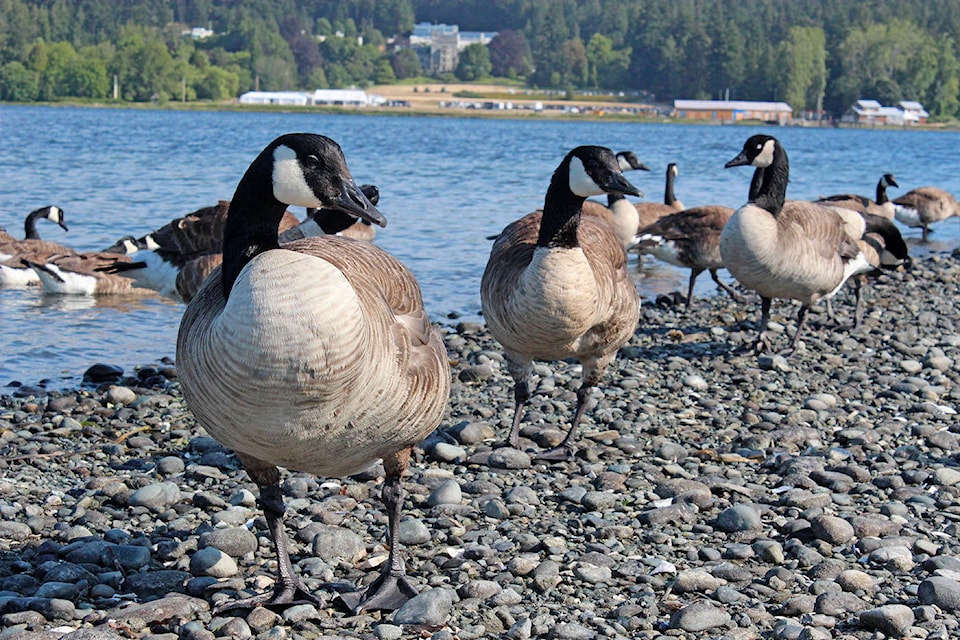Saanich Coun. Leif Wergeland wants the regional district to revisit the issue of pesky Canada geese in the area, with the non-migratory population expect to surge to 60,000 birds in the area within 20 years.
A brief pilot project by the Capital Regional District (CRD) in 2015, 43 of the birds were killed on private agricultural property.
This figure appears in a letter from Saanich Coun. Leif Wergeland, in which he asks the regional district to revisit the issue.
The CRD launched a regional Canada goose management strategy in 2012 to deal with non-migratory resident Canadian geese, but has subsequently abandoned it.
RELATED: Saanich takes shot at controlling goose population
This cull figure appears against the backdrop of statistics that show a sharp rise in the number of the birds, which regional authorities consider to be “problem wildlife” due to “their abundance, territorial behaviour, during breeding season, crop damage, potential risks to human health, fouling of grassy areas with droppings, risk of contribution to fecal coliform levels in public swimming areas and other waters, damage to lawn and green spaces, as well as other economic losses.”
According to the CRD, the region was home to 8,000 birds as observed during the 2010 Christmas bird count, with the trend-line pointing sharply upwards. According to one estimate, the regional population of Canadian geese will hit 60,000 in 2037, much to the chagrin of urban residents, but also local farmers, who have raised concerns about crop loss and food security.
The Peninsula and Area Agricultural Commission pegs the annual farming losses caused by Canadian geese in excess of $300,000 across the region, and has lobbied for federal and provincial regulatory changes “to make it easier for local jurisdictions to manage the populations, thereby reducing the continual damage to agricultural crops, improve food security and the health and safety of our beaches, parks and waterways.”
RELATED: B.C. communities want Canada goose kill permits
The birds also pose a risk to local air traffic. Geese are the third most encountered species at Victoria International Airport behind gulls and starlings and the most recent goose strike happened in 2011 when a pair of geese hit an Air Canada plane on its final approach over the Pat Bay Highway.
For the record, local residents can blame their own political leaders for these problems. Prior to 1958, the annual Christmas bird count recorded exactly zero geese in the region.
But in the 1960s and 1970s, senior levels of government joined private conservation groups to introduce the birds to the region for wildlife viewing and sport hunting opportunities among other reasons.
While Canadian geese are naturally migratory, the off-spring of these transplants had little opportunity to learn natural behaviour patterns from mature geese. These transplants also came from different sub-species, which subsequently intermixed to create a breed with no identifiable status.
